5 Types of Shrubs Every Garden Needs – Grow These Inspiring Varieties for Color, Flowers, Foliage & Fruit
These shrub types are the key to a vibrant, diverse landscape. How does your garden stack up?
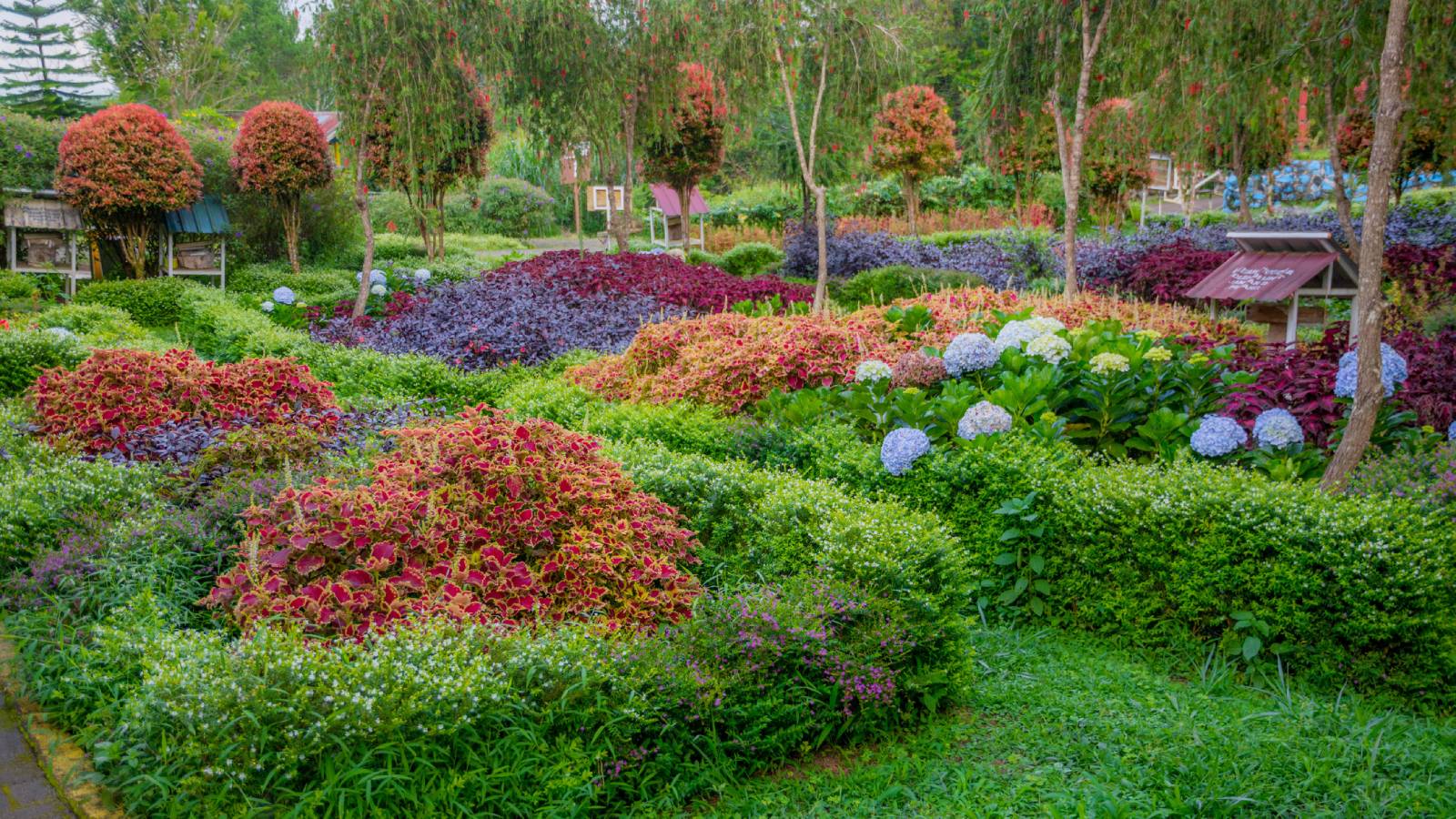

Shrubs play important roles in the garden. They often act as boundaries or privacy screens but can also be focal points or the center piece of a bed. There are several types of shrubs that can be categorized by their decorative properties, whether or not they flower or produce fruits, and by size.
From gardening with perennials to adding annuals around them, shrubs are versatile. Determine the role you want shrubs to play in your garden, consider your growing conditions and hardiness zone, and then select the best options. This handy guide outlines the main types of shrubs with some key examples to get you started.
Which Shrub Is the Right Shrub?
Because you can do so much with shrubs, choosing from among the different types of bushes and shrubs can be overwhelming. It helps to begin with a few main categories. First, consider the purpose of the shrubs you’ll be using in your garden. Do you need a hedge or a privacy screen? Do you want to grow edible berries? Are you looking for winter visual interest?
These questions will help lead you to the right category among all the different types of shrubs. Next, consider the specifics of your garden. The size of the space will help narrow your choices. You’ll also want to consider your hardiness zone, the amount of sunlight available, and your soil type and moisture conditions. You can test your soil ahead of time with the MySoil Test Kit, available on Amazon.
1. Shrubs for Foliage
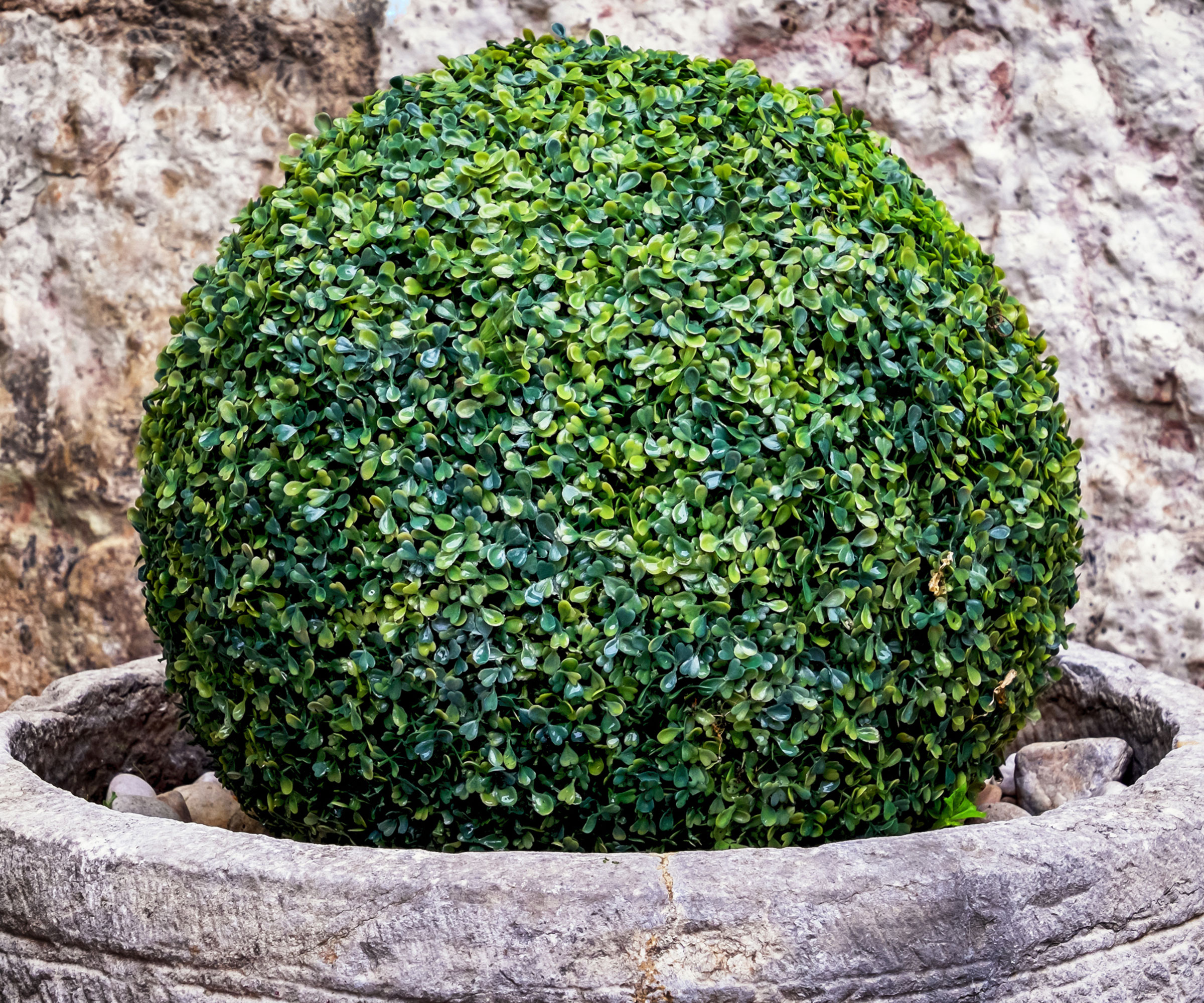
Choose shrubs for foliage if you’re interested in something ornamental with multi-season interest. There are many types of evergreen shrubs, like boxwood, and deciduous shrubs, like chokecherry, that offer variety. Foliage can provide year-round interest, fall color, and specific characteristics like unique foliage texture or glossiness.
- Boxwood. This is a popular choice of evergreen shrub for its deep green, glossy leaves that last year-round in zones 4 through 9. Boxwood makes an excellent low hedge or border.
- Inkberry. For a native evergreen shrub with attractive, glossy leaves, inkberry fits the bill. It is a medium-sized holly that can be grown in zones 4 through 11.
- Chokecherry. Chokecherry is a good choice for good fall foliage color. This native shrub is appropriate for zones 2 through 7 and provides vibrant fall color.
- Spicebush. Also native, spicebush provides gorgeous and beautiful yellow color in fall. You can grow it in zones 4 through 9.
- Oakleaf Hydrangea. This large shrub offers several seasons of color and visual interest. Oakleaf hydrangea blooms spectacularly in summer with attractive, large green leaves. In fall, the foliage turns deep shades of reddish-purple.
2. Shrubs for Flowers
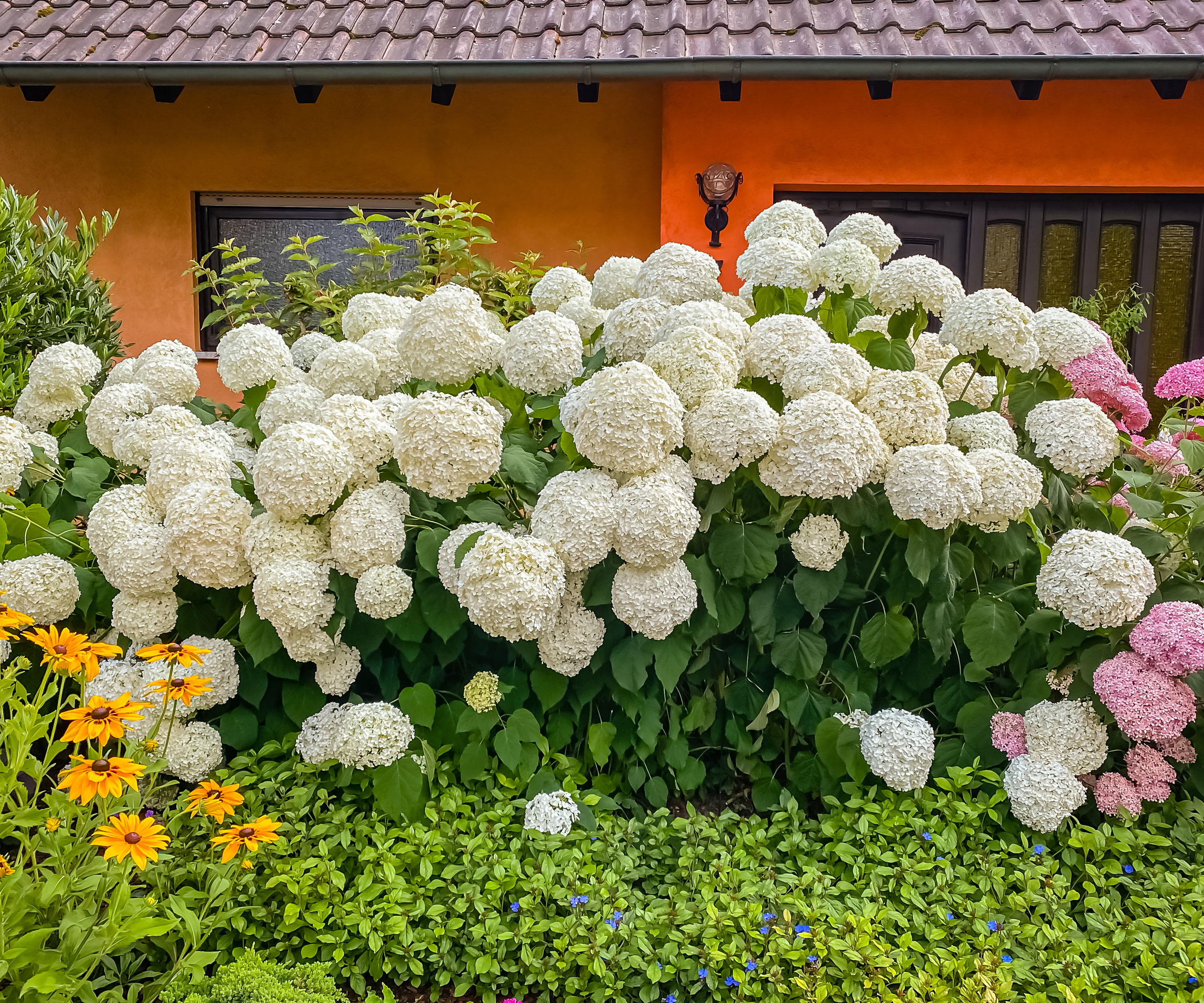
While most shrubs flower, not all have noteworthy blooms. Here are some types of shrubs with flowers that are particularly beloved or dramatic. Flowering shrubs can be used for spring color or for flowers later in the season, depending on the type.
- Forsythia. Forsythia is famous for its spectacular yellow flowers. It blooms early in spring, before leaves develop, and are an early sign of warmer weather in most areas. Although not native, you can grow these easy, large shrubs in zones 5 through 8.
- Lilac. If you’re looking for a spring flowering shrub with an amazing smell, you can’t beat lilac. Lilacs are large shrubs that flower mid-spring and do well in zones 3 through 7. Be sure to manage suckers, lilac can grow aggressively otherwise.
- Rose of Sharon. Rose of Sharon is a tall, column-shaped shrub that works well as a privacy screen or natural fence. It produces hibiscus-like flowers in summer and is easy to grow in zones 5 through 9.
- Hydrangea. This perennially popular flowering shrub comes in a variety of types and sizes, all appropriate for zones 5 through 9. From the large oakleaf hydrangea to smaller bigleaf varieties, these shrubs bloom reliably from summer into fall.
- Smoke Bush. For an unusual flower, consider smoke bush, which can grow in zones 4 through 11. It blooms with wispy, smoke-like flowers in mid-spring and early summer.
3. Shrubs for Fruit
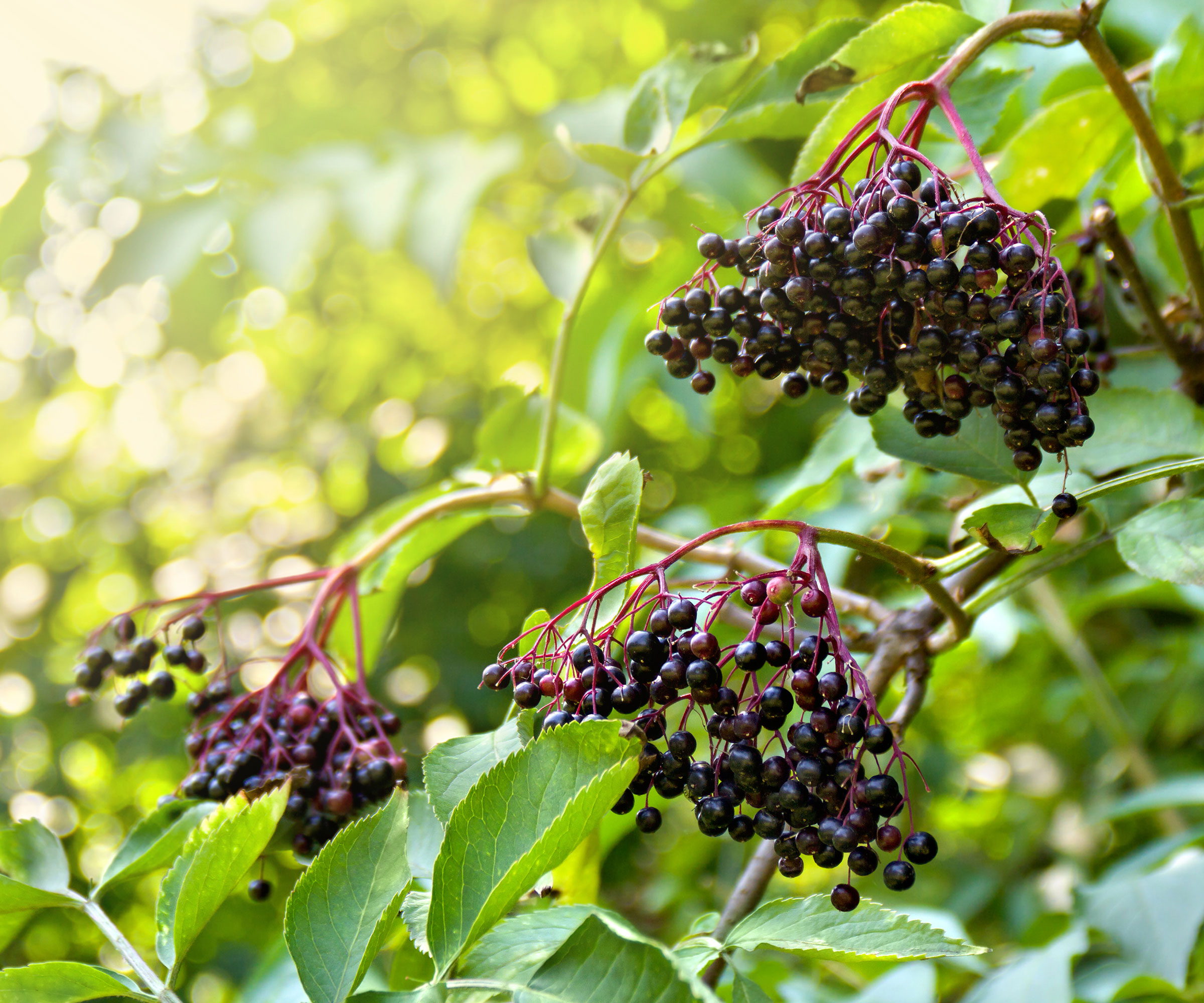
Fruit is another interesting characteristic to consider when selecting shrub. Shrubs with berries can provide fall and winter color, and when native, attract and feed wildlife. You can also find shrubs with edible fruits you can harvest.
Sign up for the Gardening Know How newsletter today and receive a free copy of our e-book "How to Grow Delicious Tomatoes".
- American Cranberrybush. Despite the name, American cranberrybush is not actually a cranberry – it's a viburnum. The red fruits that ripen in late summer and fall are edible though, and are tasty in jams and desserts. You can grow this large native shrub in zone 2 through 7.
- Beautyberry. Beautyberry is a medium-sized native shrub known for its unique, bright purple berries. It is native and feeds wildlife in zones 6 through 10. The berries are also edible for people but should be cooked first.
- Winterberry Holly. Unlike most hollies, winterberry loses its leaves in winter. But it does produce beautiful red berries that often last until spring. Winterberry holly is toxic, so it can’t be eaten, but it puts on quite a show in the winter garden in zones 3 through 9.
- Elderberry. For a large shrub that produces both flowers and edible berries, consider planting elderberry. American elderberry is large and suited to zones 4 through 8.
4. Shrubs for Size
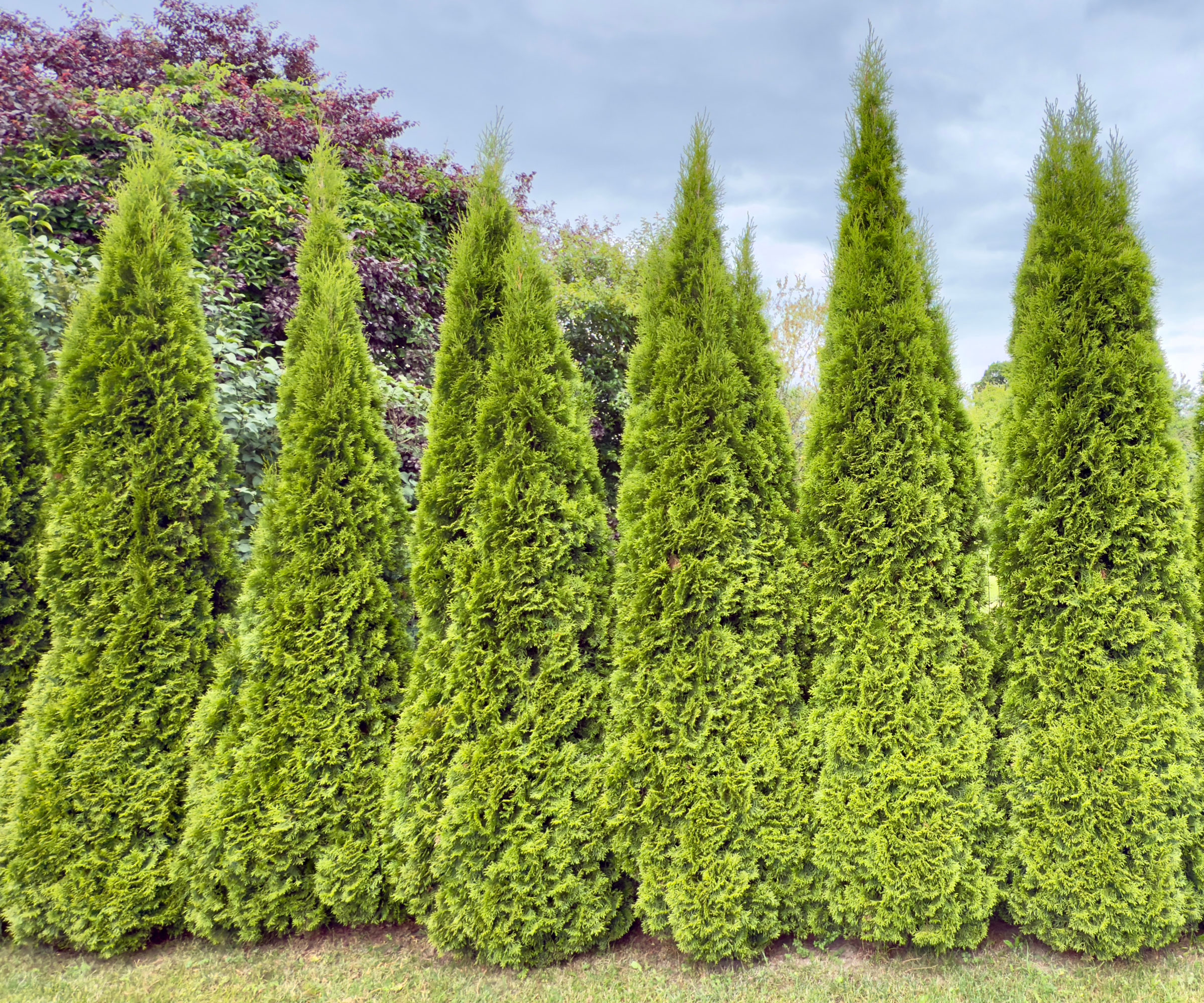
Many gardeners select shrubs based on size, so it’s helpful to know of types that are small or large. Size is important if you’re looking to fill a big space or if your area for planting is limited.
- Arborvitae. Arborvitae are narrow, column shaped shrubs or trees that are evergreen and can get very tall. They are prized as attractive and fast-growing privacy screens. Choose a variety based on your desired size. Most types grow in zones 5 through 8.
- Privet. Privet is another popular choice for a hedge because it grows fast and tall. It is suitable for zones 4 through 10 and has spring flowers and winter fruit. Be aware – privet is considered invasive in many areas.
- Spirea. Spirea is a popular landscaping shrub for its attractive foliage, spring flowers, and low maintenance needs. It's also a diverse shrub group with many types, including diminutive varieties as little as one foot. They grow well in zones 4 through 8.
5. Shrubs for Containers
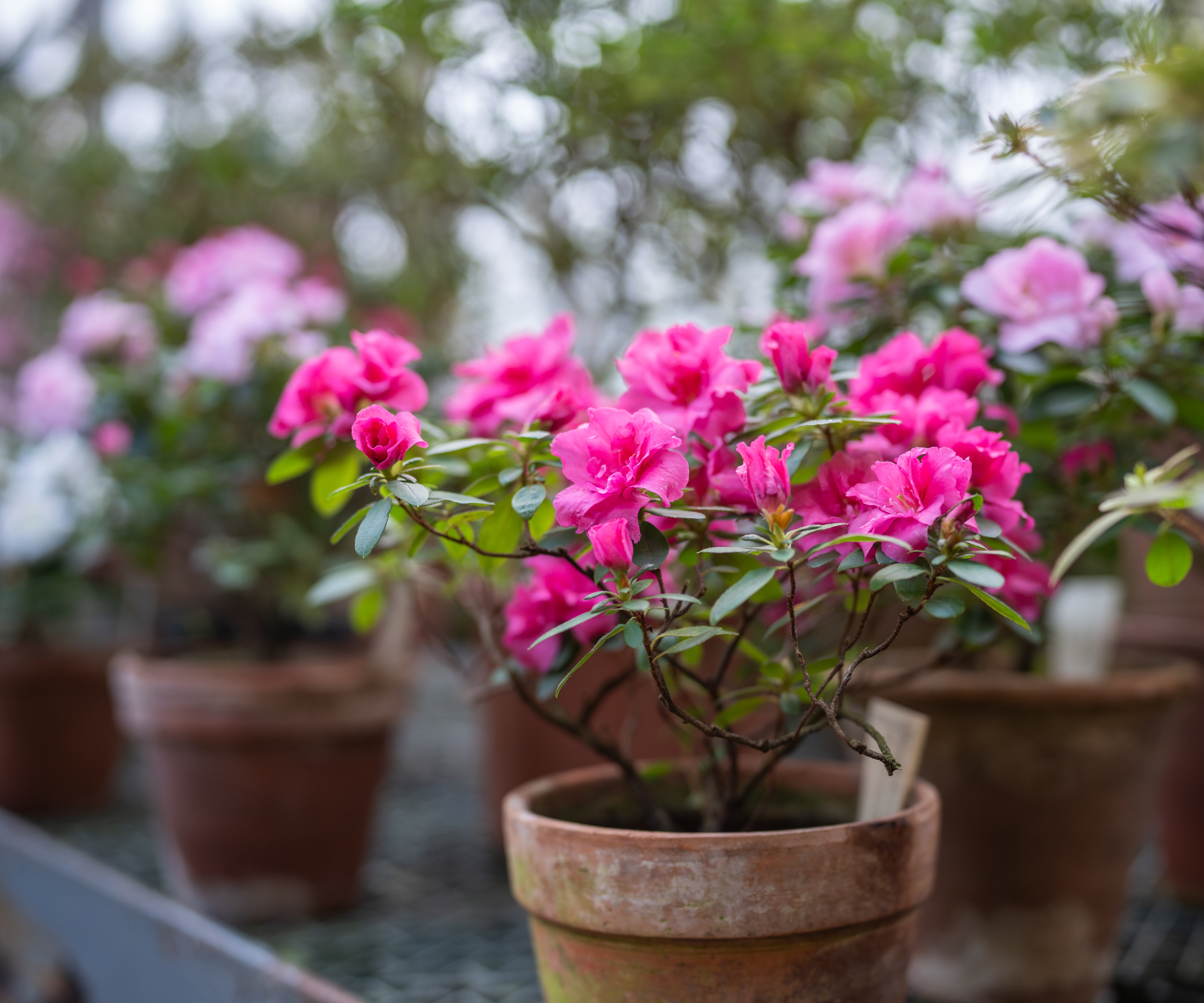
You can even grow shrubs in containers if you choose the right type. These are generally smaller bushes or dwarf varieties. Try planting them in one of these awesome head planters from Amazon.
- Blueberry. Blueberry bushes come in a variety of sizes. The smaller types grow well in containers. They are hardy in zones 3 through 9. Look for smaller or dwarf varieties.
- Butterfly Bush. Butterfly bush is a small to medium flowering shrub that adapts well to sturdy containers. Grow butterfly bushes in zones 5 through 9 and enjoy the summer flowers that draw pollinators to your yard.
- Azalea. Azaleas come in a variety of sizes, and the smaller types are great in containers. They can be evergreen or deciduous and produce spectacular spring flowers. Grow azaleas in zones 6 through 8.
- Dwarf Varieties. It’s easier than ever to find dwarf cultivars of your favorite shrubs. From forsythia and lilac to arborvitae and holly, you can get smaller varieties of shrubs to grow in containers.
There are so many different types of shrubs. Use this guide as a starting point in your search for the perfect bushes or shrubs for your garden.

Mary Ellen Ellis has been gardening for over 20 years. With degrees in Chemistry and Biology, Mary Ellen's specialties are flowers, native plants, and herbs.